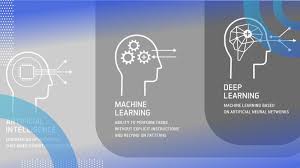The Art and Science of Developing Software
Software development is a fascinating process that combines creativity, problem-solving, and technical expertise. It involves transforming ideas into functional applications that can revolutionise industries, streamline processes, and enhance user experiences.
The Development Lifecycle
Developing software typically follows a structured lifecycle that includes planning, designing, coding, testing, and deployment. Each phase is crucial in ensuring the final product meets the requirements and expectations of its users.
Collaboration and Communication
Effective communication and collaboration are key components of successful software development. Developers work closely with stakeholders to gather requirements, provide updates on progress, and incorporate feedback throughout the development cycle.
Problem-Solving and Innovation
Software developers are adept problem-solvers who thrive on finding creative solutions to complex challenges. They leverage cutting-edge technologies and innovative approaches to create software that pushes boundaries and drives progress.
Quality Assurance
Testing is an essential part of the software development process to ensure the functionality, performance, and security of the application. Quality assurance specialists rigorously test the software to identify bugs, usability issues, and areas for improvement.
Continuous Learning and Improvement
The field of software development is constantly evolving, with new technologies emerging at a rapid pace. Developers must stay updated on industry trends, learn new skills, and adapt to changing requirements to deliver high-quality software solutions.
Conclusion
In conclusion, developing software is a dynamic and rewarding endeavour that requires a blend of technical expertise, creativity, teamwork, and dedication. By embracing innovation, collaboration, and continuous learning, software developers play a vital role in shaping the digital landscape of tomorrow.
Frequently Asked Questions About Software Development
- Is developing a software easy?
- What are the 5 processes in software development?
- How do you develop a software?
- Which is a software development process?
- What is the meaning of developing software?
- Which software is used for developing software?
- What are the 5 process in software development?
- What is the use of developing software?
Is developing a software easy?
The question of whether developing software is easy is a common one, and the answer is nuanced. While the basic principles of software development can be learned by anyone with dedication and persistence, mastering the craft and creating sophisticated, high-quality software requires a combination of technical expertise, problem-solving skills, creativity, and experience. Developing software involves navigating complex challenges, staying updated on evolving technologies, and collaborating effectively with stakeholders. It is a multifaceted process that demands continuous learning, adaptability, and a passion for innovation to deliver successful software solutions that meet user needs and exceed expectations.
What are the 5 processes in software development?
In software development, there are typically five key processes that form the foundation of the development lifecycle. These processes include planning, where project requirements and objectives are defined; design, where the software architecture and user interface are conceptualised; implementation, which involves coding and programming to bring the design to life; testing, where the software is rigorously evaluated for bugs and performance issues; and deployment, the final stage where the software is released to users. Each of these processes is essential in ensuring the successful creation of high-quality and functional software applications.
How do you develop a software?
Developing software involves a structured process that begins with thorough planning and analysis of requirements. This phase is followed by designing the software architecture, coding the application using programming languages, and testing for functionality and quality assurance. Collaboration among developers, stakeholders, and quality assurance teams is essential throughout the development cycle to ensure that the software meets user expectations. Continuous learning and adaptation to new technologies are also key factors in successfully developing software that addresses specific needs and delivers value to users.
Which is a software development process?
A software development process refers to a structured approach or methodology followed by developers to create high-quality software efficiently. Common software development processes include Agile, Waterfall, and DevOps, each with its own set of principles, practices, and stages. These processes help streamline the development lifecycle, from initial planning and design to coding, testing, and deployment. By choosing the right software development process based on project requirements and goals, developers can ensure better collaboration, improved productivity, and successful delivery of software solutions that meet user needs.
What is the meaning of developing software?
The process of developing software encompasses the creation, design, implementation, and maintenance of computer programs and applications to address specific needs or solve particular problems. It involves a systematic approach that includes planning, coding, testing, and deployment to ensure the software meets the requirements and expectations of its users. Developing software requires a combination of technical skills, problem-solving abilities, creativity, and collaboration to deliver functional and innovative solutions that drive progress in various industries and enhance user experiences.
Which software is used for developing software?
When it comes to developing software, there is a wide range of tools and technologies available to software developers. Commonly used software for developing software includes integrated development environments (IDEs) such as Visual Studio, IntelliJ IDEA, and Eclipse. These IDEs provide a comprehensive set of features that streamline the coding process, facilitate debugging, and offer project management capabilities. Additionally, programming languages like Java, Python, C++, and JavaScript are widely utilised in software development due to their versatility and robustness. Ultimately, the choice of software tools depends on the specific requirements of the project and the preferences of the development team.
What are the 5 process in software development?
In software development, there are five key processes that form the foundation of the development lifecycle. These processes include planning, where project requirements are defined and project goals are established; design, where the architecture and structure of the software are outlined; implementation, where the actual coding and programming take place to bring the design to life; testing, where the software is rigorously tested for functionality, performance, and bugs; and finally, deployment, where the software is released to users after successful testing. Each of these processes is essential in ensuring the successful development of high-quality software solutions.
What is the use of developing software?
The development of software serves a fundamental purpose in modern society by enabling the creation of applications and systems that automate tasks, streamline processes, and enhance efficiency across various industries. Software development plays a crucial role in addressing specific needs and challenges faced by businesses, organisations, and individuals, offering tailored solutions to improve productivity, communication, data management, and overall user experiences. Ultimately, the use of developing software empowers innovation, drives technological advancements, and facilitates the digital transformation of our interconnected world.






